Let’s have a look at the animation work made by the teams of Mackevision on many shows such as Game of Thrones and Lost in Space:
© Vincent Frei – The Art of VFX – 2021
Let’s have a look at the animation work made by the teams of Mackevision on many shows such as Game of Thrones and Lost in Space:
© Vincent Frei – The Art of VFX – 2021
Be sure to watch this stylish opening title created by Antibody for the superheroes Netflix series, Jupiter’s Legacy:
// Credits
CLIENT Netflix
CO-EXECUTIVE PRODUCER Hameed Shaukat
PRODUCTION Antibody
DIRECTOR Patrick Clair
ILLUSTRATIONS Jock
DESIGN & ANIMATION Eddy Herringson
ANIMATION Laura Heath
VISUAL RESEARCH Charlie Dahan
STORYBOARDS Lance Slaton
EXECUTIVE PRODUCER Carol Salek
MANAGING PARTNER Bridget Walsh
MUSIC COMPOSITION Stephanie Economou
WANT TO KNOW MORE?
Netflix: You can now watch Jupiter’s Legacy on Netflix.
© Vincent Frei – The Art of VFX – 2021
Last month, Kevin Smith explained in detail the work of Weta Digital on Zack Snyder’s Justice League. Today he comes back with a completely different genre, Godzilla vs Kong.
Edwina Ting is working as animator for over 15 years. She joined the teams of Weta Digital in 2010 and worked on many movies such as The Adventures of Tintin: The Secret of the Unicorn, War for the Planet of the Apes, Rampage and Avengers: Endgame.
Stephen Tong has been working in visual effects for over 20 years. He worked for many years at DNEG before joining Weta Digital in 2018. He has worked on films such as John Carter, Man of Steel, Mortal Engines and Zack Snyder’s Justice League.
How was the collaboration with VFX Supervisor John ‘D.J.’ DesJardin?
I loved working with DJ and Tamara as well. The whole client side VFX team were great to work with. It was a pretty relaxed show. It was my first go-around with DJ, but once he felt us out and we had built up a little trust, he was super collaborative and willing to let us do some heavy lifting creatively.
How did you come up with Kong’s morning routine? Was there particular inspiration – and was it fun for the animators?
The basic outline of the scene came from the client, then our Animation Supervisor Dave Clayton went onto the MoCap stage with our mocap performer Allan Henry and fleshed it out. We like to shoot takes long and do different performances—just like you would on set—so the client can put it into the Avid and decide where to take it. That feeds back to us, and we can do another pass taking into account the more specific client notes. I love it because it lets everyone be more creative, and it’s generally where the magic happens. The moment where Kong scratches his butt? No one is going to ask for that, but it just happened as a spur of the moment idea and was so good that the client ran with it.
I think the inspiration was that we’re all getting older and could totally relate to the idea of getting up early in the morning, again, and going to ‘work’ throwing trees at the ceiling, again. Who hasn’t had those feels in the morning?
The movie is taking us inside the Earth. How did you work with the art department to design it?
Like anything else, we get concept art and notes from the client, then work towards a result using that information partially as a leaping off point and partially as a guide. Adam had a solid idea of how he wanted Hollow Earth to feel, making it much easier for us.
Can you elaborate about the FX work when Kong and the heroes enter the vortex?
VFX Producer Kevin Sherwood, Animation Supervisor Dave Clayton, and I all spent some time on set when the production was shooting in the Gold Coast, Australia. While we were there and getting to know the clients, DJ and I were talking about our shared love of old movies and old-school VFX because Adam Wingard wanted to a homage to 2001: A Space Odyssey for the portal shots as our heroes made the jump to hollow Earth. We discussed how Doug Trumbull had done some of those practical effects, and I said, “why don’t we just do a modern version of the slit-scan for the background of those shots?” DJ loved the idea, so when we got back to Weta, I researched the technical aspects of how they did it. I even found code online that someone had written to extract the original images fed into the slit-scan from the film footage.
I made a setup in Nuke that approximated how it all worked and used the found footage to make sure I was getting the correct result. Then I started feeding in my own images until I got something I liked. I threw this under the plate and showed a couple of the most promising ones to DJ and Adam. They liked the first tests so much that one ended up as the background of those shots.
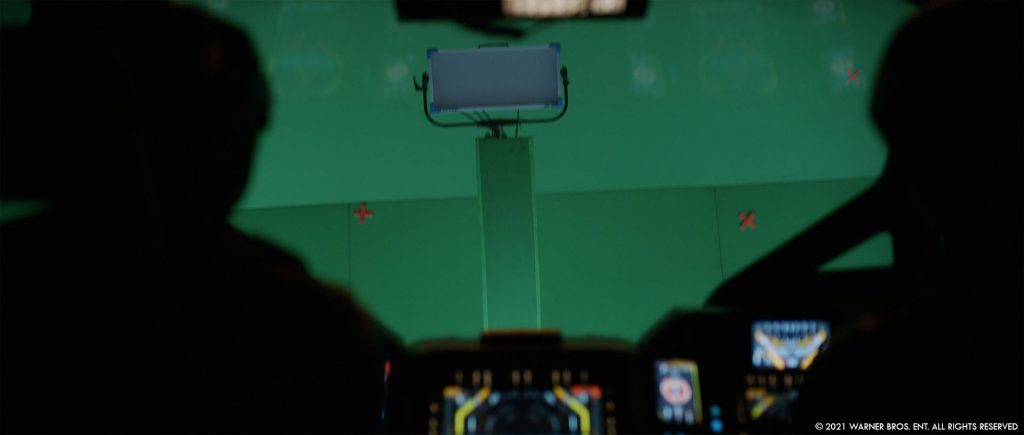
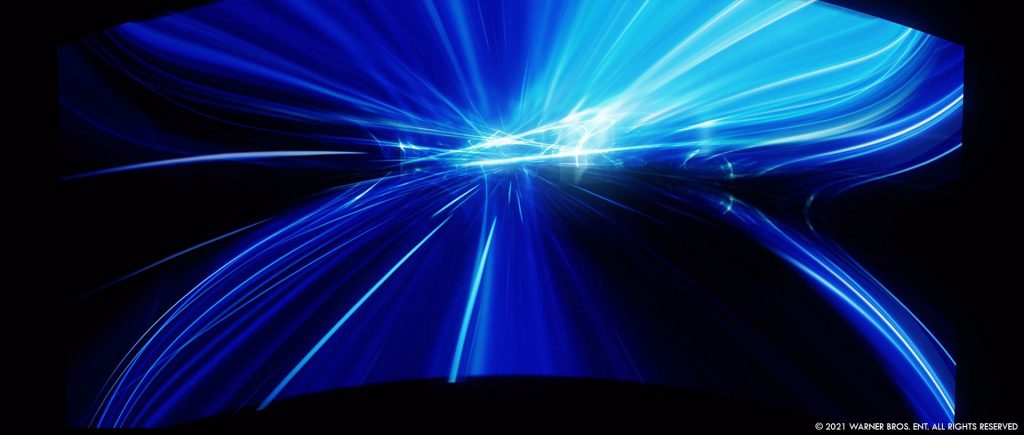
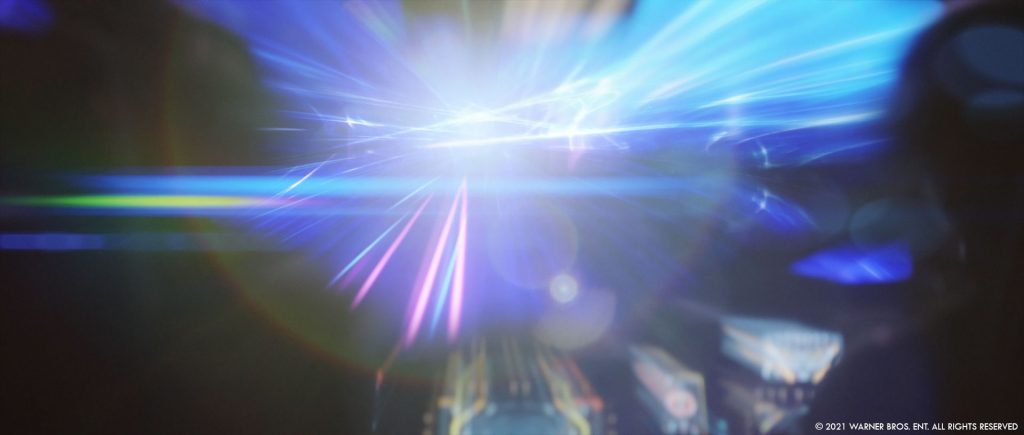
Which location was the most complicated to create and why?
It wasn’t one particular location as much as it was the entirety of Hollow Earth, and getting that to feel right in a way that enables the audience’s suspension of disbelief. There are just so many things that you’re fighting against there—the fact that it’s essentially a giant cave, that there are areas where gravity acts, let’s say, a tad unscientifically. I try to start every effect with the question, “what would it do in the real world?” but for Hollow Earth, that goes right out the window, and you’re left with “well, how can we make it interesting and pretty enough so that people won’t ask obvious questions like ‘wait, where does the light come from?’?”
That’s not to say we threw out the proverbial baby in the bathwater. We made a valiant attempt to put things on screen to help rationalise this crazy environment. Still, when all was said and done, we chose ‘cool’ over ‘any semblance of scientific accurracy’ every time. In the first wide shot of Hollow Earth as Kong falls, we establish the volcanic cloud over the temple as a source of light. Obviously, that wouldn’t work, but once we committed to it, we quit worrying about it and lit the shots as though there was a magic sun that let everything look as though it was vaguely outdoors, and we kept the ‘sun’ offscreen. Even though there were a couple of 180° pans that were trouble later, it seemed to work pretty well.
What’s the VFX shots count?
Weta worked on 253 shots.
What is your favourite shot or sequence?
There’s a shot of Kong running across a rocky landscape in Hollow Earth. As he runs by, a bunch of little crab guys scuttle about then settle back down, except one who is immediately eaten by a predator. It looks great, it came out really well, but really I love how much of a story it tells about Hollow Earth and where we are in just one shot.
What was the main challenge on this show, and how did you achieve it?
The balancing act between selling the scale of Kong while simultaneously treating him like an actor cinematographically was, for me, a huge challenge. I wish I could say there was a magic bullet we discovered that made everything just work. In reality, it was a constant balancing act between scale and performance.
Tricky question: are you more Godzilla or Kong?
Kong of course! It’s what we worked on, and I love to root for the underdog.
How long have you worked on this show?
From going to the shoot in Australia to delivery was about 15 months.
What is your next project?
Unfortunately, I’m not able to say.
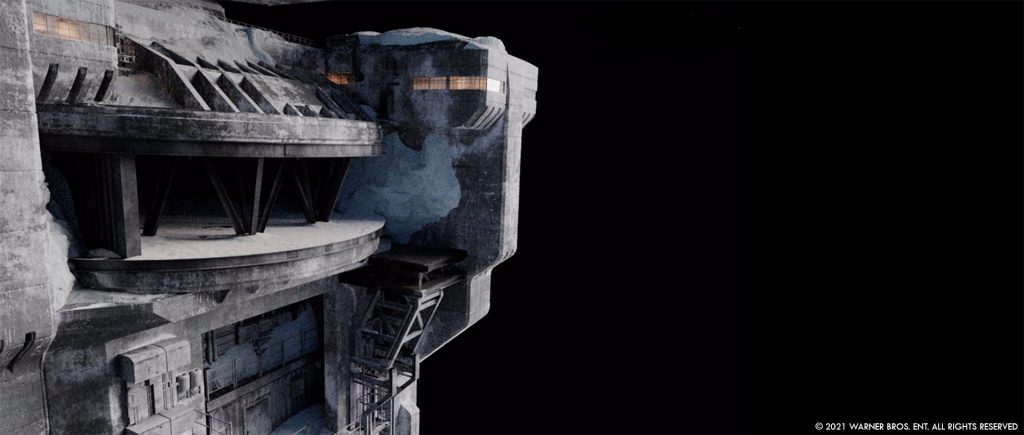
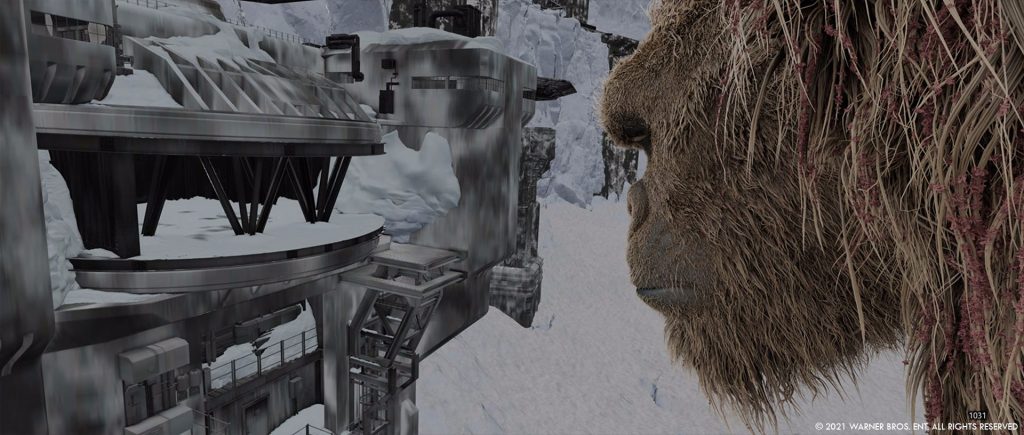
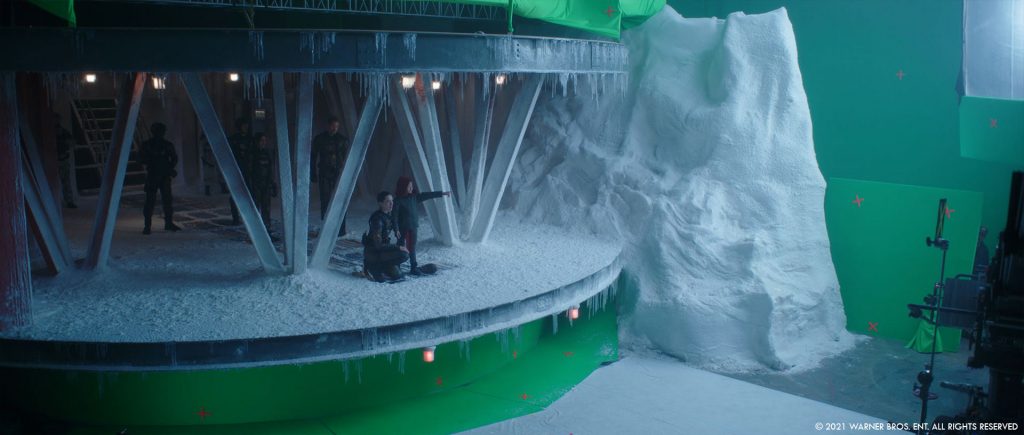
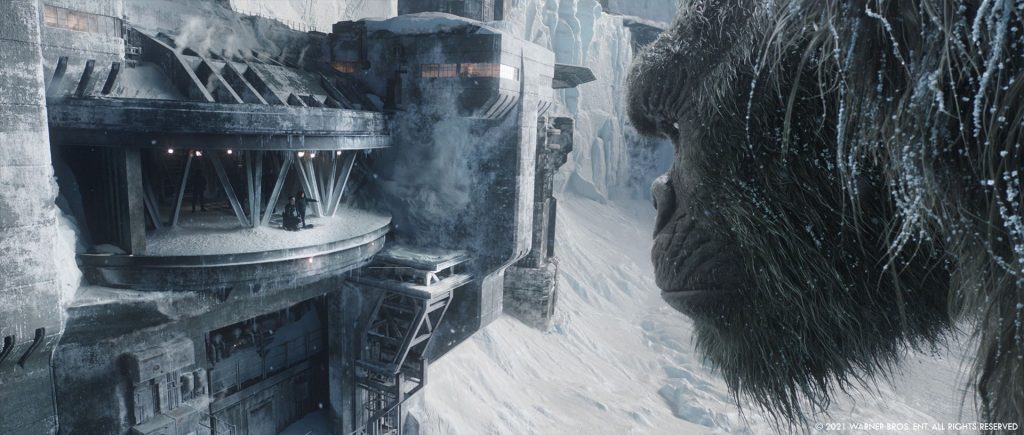
// Edwina Ting, Animation Lead
What kind of references and influences did you receive for the animation?
We received Previs from the client and took reference from the previous Kong movies. From this, we used our experience animating gorillas and monsters on our previous shows, such as Rampage and the Planet of the Apes trilogy, while also searching for motion of real-life creatures from videos.
You’ve dealt with characters of enormous size before, especially the animation – does it get easier or are there little tricks you learn to bridge the gap between real physics and “movie physics”?
It gets easier the more you do it—you learn what looks good and what feels right. Bigger creatures tend to have a larger mass, and it will take longer to stop their momentum once they get moving. One trick that I learnt for animating giant creatures is to put a generic human running alongside them to see if your monster is travelling at a suitable pace.
Kong is really emotional in some sequences. Can you elaborate about this aspect?
It’s always fun to find out more about your favourite monsters and their backstories. I believe Kong’s emotional journey highlights his intelligence and helps explain his willingness to compromise—even in a fight for dominance with Godzilla—to keep his new adoptive human family safe.
The Hollow Earth is full of creatures. Can you talk about the creative process there especially give some detail on the flying creature?
The client provides us with inspirational pictures and concepts. Our art department will find as much reference as possible and work up the details: limbs, skin, fur, eyes, everything! We sometimes manipulate a creatures musculature to make it feel more physically believable.
How did you choreograph the fights between Kong and the creatures?
The Nozuki fight choreography is based on Previs from the client. Through discussions between the supervisor and the team, we worked out how to build up the fight in a lively and convincing way while keeping Kong’s emotion in mind to help direct the action. Lots of references are gathered, ideas are bounced back and forth and sometimes acted out by the animators and mocap performers. Feedback from the client will also influence the choreography as they confirm whether the action portrays the story they are envisaging.
What is your favorite shot or sequence?
Besides the Nozuki fight that we worked on, I really enjoyed the other vendor’s first fight of Kong vs Godzilla in the water. I thought it was exciting to see him fighting out of his element.
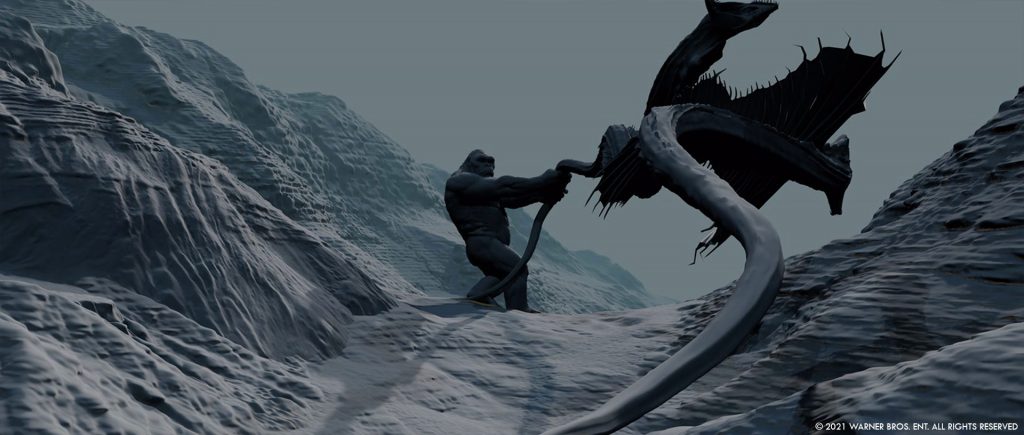
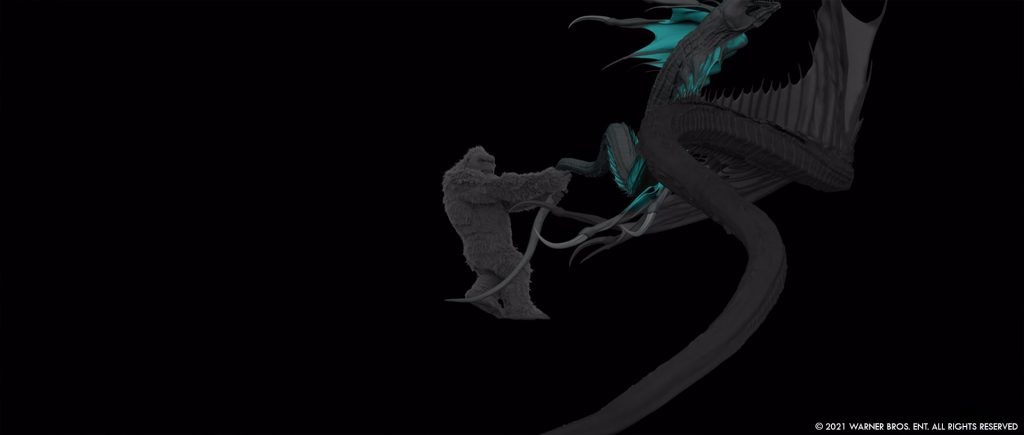

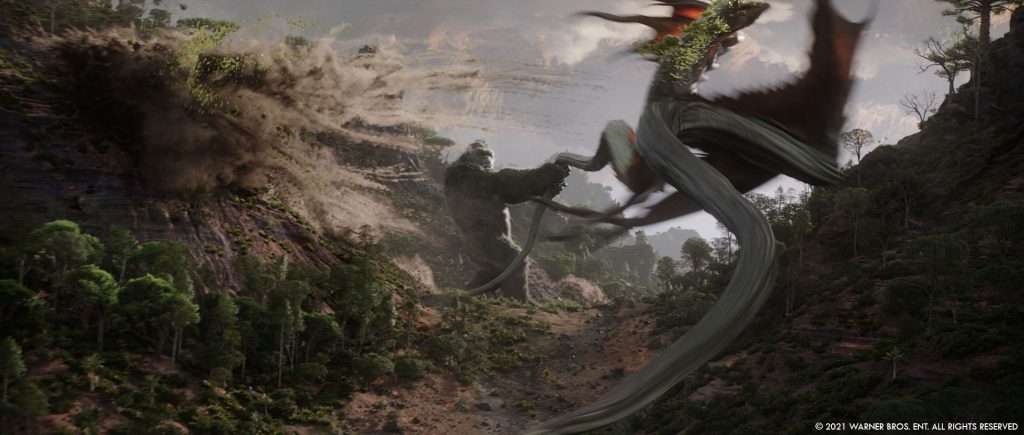
// Stephen Tong, CG Supervisor
At some point, the gravity is changing with Kong moving to one place to the other. How did you manage the camera so it felt natural and you never lost perspective of where you were?
The cameras and the design of the environment evolved quite a bit from the previs during post-production. Director Adam Wingard wanted the hill to look more like a cliff, with Kong standing on the edge of it and taking a leap of faith. We made the topside cliff much further away than depicted in the previs to emphasise the drama of the jump and to allow animation more space to create more compelling compositions for the shots.
Did you have much work to do on the fur and groom for Kong – any special challenges with the snow?
Scanline built the Kong asset and delivered us the ‘default’ variant. We ingested it into our pipeline and used it for 90% of our shots. For the Antarctica sequence where Kong has snow in his fur, we made a slightly damp groom. To account for Kong’s size, we made snow geometries very small and stuck huge tons onto the fur. It added an extra level of realism. We also placed additional FX snow chunks on the groom that could fall off when Kong moved.
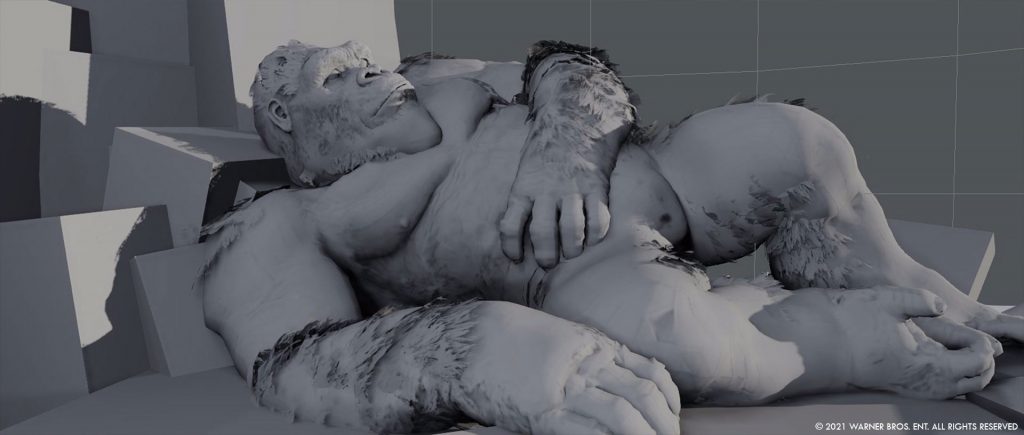
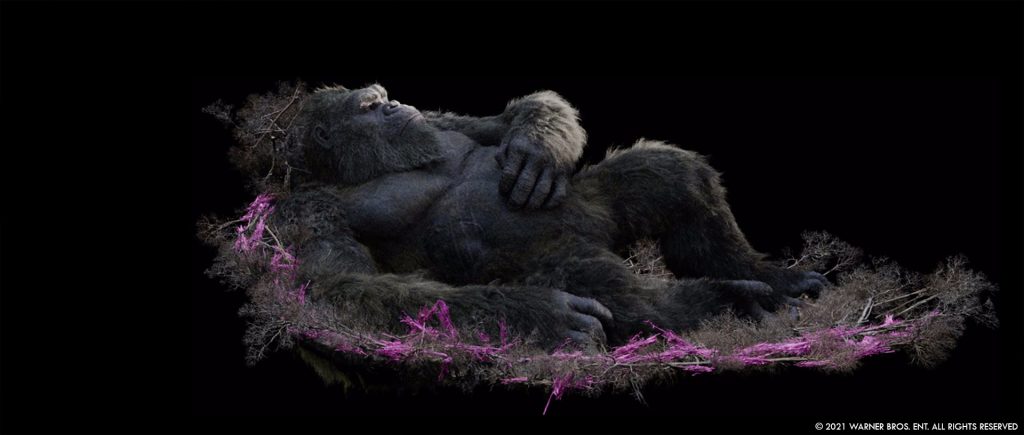

How long have you worked on this show?
About a year.
What is your next project?
A big thanks for your time.
WANT TO KNOW MORE?
Weta Digital: Dedicated page about Godzilla vs Kong on Weta Digital website.
© Vincent Frei – The Art of VFX – 2021
Let’s follow the the Abbott family (Emily Blunt, Millicent Simmonds, Noah Jupe) to the outside world in this final trailer of A Quiet Place: Part II!
The VFX are made by:
Industrial Light & Magic
The Production VFX Supervisor is Scott Farrar.
Director: John Krasinski
Release Date: May 28, 2021 (USA)
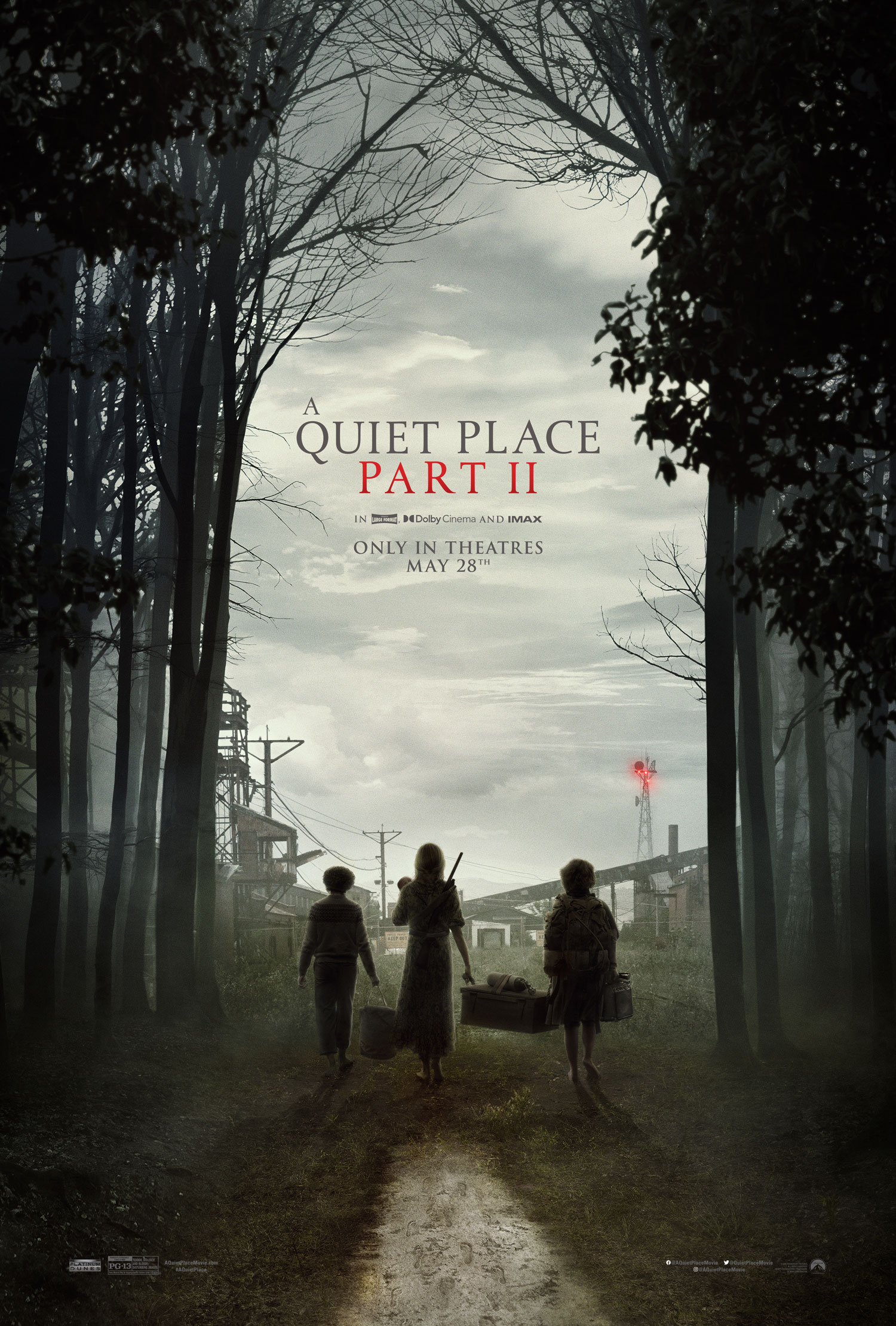


© Vincent Frei – The Art of VFX – 2021
Don’t miss this VFX Showreel by Pixomondo showing the work on many shows such as Raised by Wolves, Perry Mason, Westworld – Season 3, Midway and many more:
WANT TO KNOW MORE?
Raised by Wolves: My interview of Boris Schmidt (VFX Supervisor) with Max Riess, Moritz Bock and Julian Lojek (VFX Supervisors).
Perry Mason: My interview of Michael Shelton, VFX Supervisor.
Westworld – Season 3: My interview of Nhat Phong Tran (VFX Supervisor) & Phi Van Le (VFX Producer).
Midway: My interview of Derek Spears (VFX Supervisor), Tefft Smith II (Head of Visualization) & Phi Van Le (VFX Producer)
© Vincent Frei – The Art of VFX – 2021
Let’s discover how the teams of FuseFX have created the trains and the frozen world of the second season of Snowpiercer:
WANT TO KNOW MORE?
Geoff Scott: My interview of Overall VFX Supervisor about the second season of Snowpiercer.
Damien Thaler: My interview of FuseFX VFX Supervisor Damien Thaler about the second season of Snowpiercer.
© Vincent Frei – The Art of VFX – 2021
Let’s have a look at the VFX work made by the Italian studio EDI Effetti Digitali Italiani on various series and movie such as Rose Island, Ford v Ferrari, ZeroZeroZero and many more:
WANT TO KNOW MORE?
EDI: Dedicated page about Rose Island on EDI website.
EDI: Dedicated page about Ford v Ferrari on EDI website.
EDI: Dedicated page about ZeroZeroZero on EDI website.
Elisabetta Rocca & Stefano Leoni: My interview of Elisabetta Rocca & Stefano Leoni, VFX Supervisors at EDI Effetti Digitali Italiani.
Netflix: You can now watch Rose Island on Netflix.
© Vincent Frei – The Art of VFX – 2021
Back in 2018, Nicolas Chevallier explained Framestore‘s work on Fantastic Beasts: The Crimes of Grindelwald. He then worked on Timmy Failure: Mistakes Were Made. Today he tells us about his work to bring to life a super cute squirrel!
How did you and Framestore get involved on this show?
We have been working closely with Disney on multiple projects lately including Timmy Failure: Mistakes Were Made. Flora & Ulysses has a similar vibe. Naturally, we had been contacted to meet the team & start the process of designing the character.
How was the collaboration with Director Lena Khan and VFX Supervisor Daryl Sawchuk?
Most of the interactions were with Daryl Sawchuk on our side during the production. Also I got the chance (pre-pandemic) to go on set and meet with the whole team. This gave us an opportunity to be able to talk to Director Lena Khan to understand the mood of the film.
What was her approach and expectations about the visual effects?
There was a bit of a learning curve on both sides to tone our instruments. Daryl & I went methodologically through all the steps of the process and clarified all the milestones we were going to achieve. That way, everybody was on the same page. All the technical aspects put aside, Lena could focus on directing a talent. The expectations regarding the acting of Ulysses were very high. Capturing emotions was emotion.
How did you organize the work with your VFX Producer and amongst the Framestore offices?
Massimo Meo was our internal producer and Framestore’s office in Montreal was the main studio involved, with some outsourcing for specific departments.
How did you work with the art department to design and create the super cute Ulysses?
One of the key components was to find a squirrel! We had an early concept provided by production, but based on previous shows, we have proven that finding a living animal to start from is best. We basically did a worldwide scooting for red squirrels. It was challenging as these are an endangered species & it was a breeding period at this time.
We contacted a photographer in north Sweden who was a red squirrels specialist (https://geertweggen.com/). We shipped equipment & also had multiple calls with him to describe the material required. He provided us with amazing pictures & high speed footage as well as technical references (hdri, photogrammetry,..). One picture got the attention of Lena. She said “That’s Ulysses!”
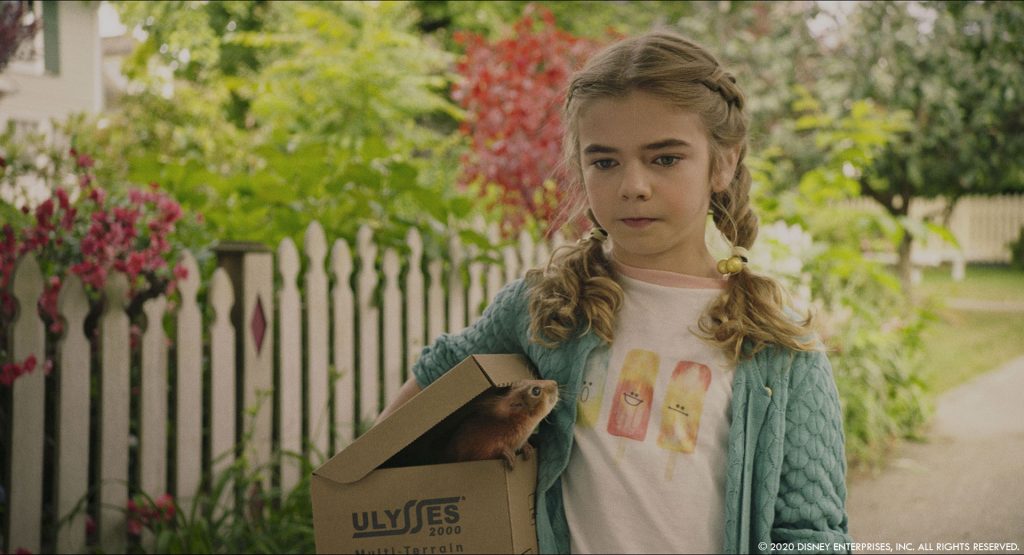
How did you use the huge experience of Framestore for the creatures?
We developed a process and protocol to create the polar bear on Disney’s Timmy Failure: Mistakes Were Made. Pierre-Loic Hamon (head of creatures) & I refined the approach, matching poses & animated clips to catch the essence of squirrel’s likeness & behaviour.
Can you explain in detail about the creation of Ulysses?
We started with anatomy drawing & pictures to create the skeleton (making sure we had a good base regarding proportions). The modeling of the body envelope comes next in combination with the groom to assess how the fur is in every part of the body. Then muscles were designed to allow for realistic creature dynamic simulations. Rigging gathering all these elements to handover to animation to test motion & match selected references. These clips were used down the line to calibrate textures, lookdev & lighting.
Can you tell us more about his rigging and animation?
The rigging department designed a specific rig with shape controllers, dynamic weight compensation & auto breathing (Squirrels breathe a lot!). The shape controllers were really helpful to define outlines straight from animation & sometimes guide the creature dynamics.
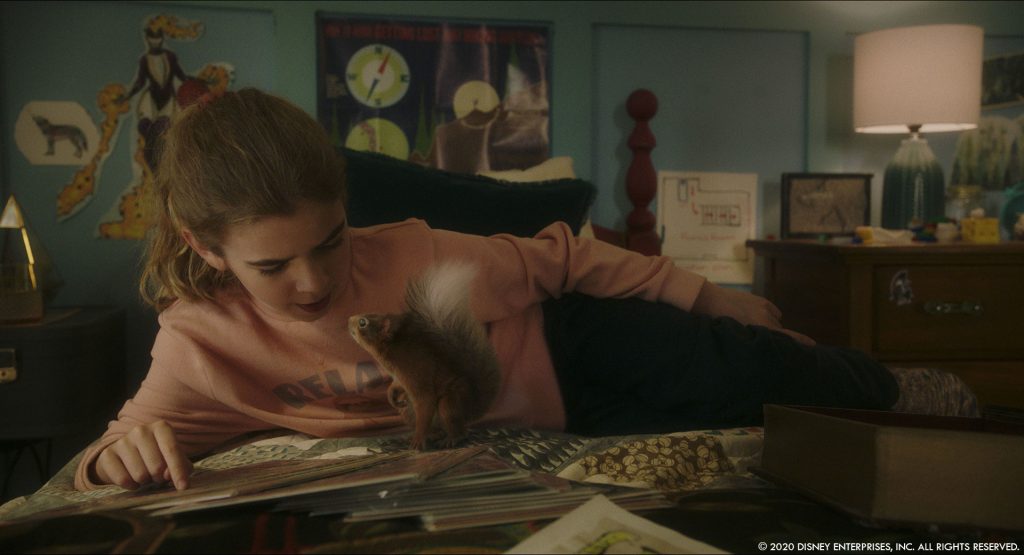
What kind of references and influences did you received for Ulysses?
We received an early concept of a red squirrel that helped us find a real squirrel to use as a reference.
Can you elaborates about Ulysses animations and especially his superheroes poses?
This is really part of the storytelling Lena came up with & comic books are present across the movie. Also, looking at many squirrels references, they can achieve some incredible superhero moves.
How did you create his beautiful fur?
Groomed one by one. Just kidding. Our lead on the show designed the groom with our in-house tool. There was a lot of back & forth for positions, width, length & color.
We developed a specific tool to allow us to paint on the hair in depth. This is a common thing in mammals; the hair coloration depends on the region of the body but also differs in time.
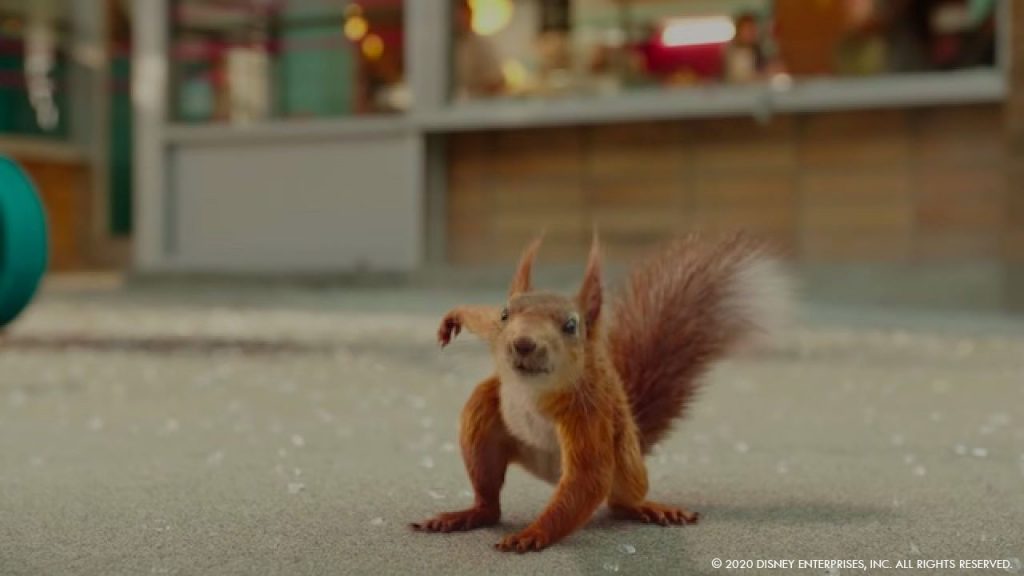
Can you explain about the lighting work?
One of the biggest challenges was all the interaction between Ulysses and other characters & environments. We did a lot of body tracking with some of them including a dash of shot sculpt. We started off by using the HDRI provided by the client & added the cg prop. We then made the scene’s physical lights within our lighting tool, adding some beauty light as needed. Most of the time, we paid a lot of attention to have really accurate lighting before going to compositing. It was really challenging on the comp side to integrate Ulysses in all sorts of situations.
How was simulate his presence on-set to help the crew and the cast?
All sorts of props on from a heavy black bag with tracking markers to a fake stuffed squirrel.
How does the super slow-motion shots affects your work?
The challenges with super slow motion were mainly related to the simulation from creature dynamics & Fx; all the parameters needed to be adjusted & tweaked to give the right feeling. There was one specific shot that required a lot of work from animation as well. Animating in slow motion requires a first pass in real time (for physicality) then going to slow-motion and finally adjusting to varispeed.
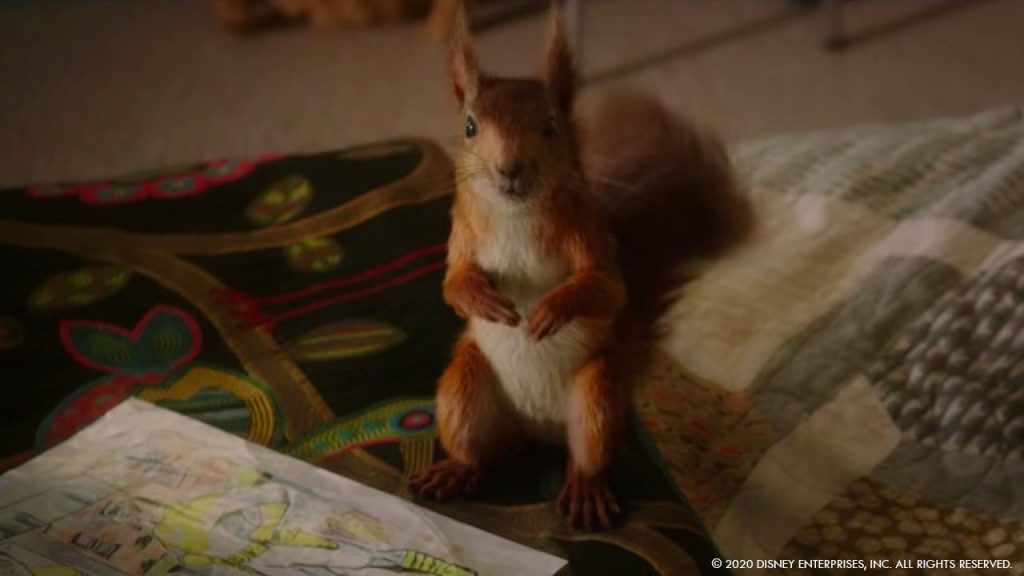
Which sequence or shot was the most challenging?
The dinner sequence was definitely a challenge with the character interactions & the donuts “explosion”.
Did you want to reveal any other invisible effects?
During the pandemic, production couldn’t reshoot so we had to create a few plates that were full cg which included Flora.
Is there something specific that gives you some really short nights?
The pudding sequence
What is your favorite shot or sequence?
Flora petting Ulysses and him brushing his nose back on her finger. I think Ulysses is acting with the right tone!
What is your best memory on this show?
Everything from this show was a good memory. We had a great relationship with the production & also a real bond within the team. We started at the office then moved home but kept our spirits lifted..
How long have you worked on this show?
Approximately 14 months.
What’s the VFX shots count?
434 shots.
What is your next project?
I’m working on an undisclosed project for Disney.
A big thanks for your time.
// Flora and Ulysses – Official Trailer – Disney+
WANT TO KNOW MORE?
Framestore: Dedicated page about Flora & Ulysses on Framestore website.
Disney+: You can watch now Flora & Ulysses on Disney+.
© Vincent Frei – The Art of VFX – 2021